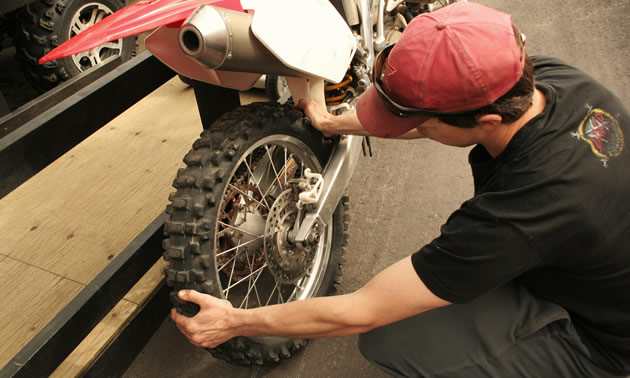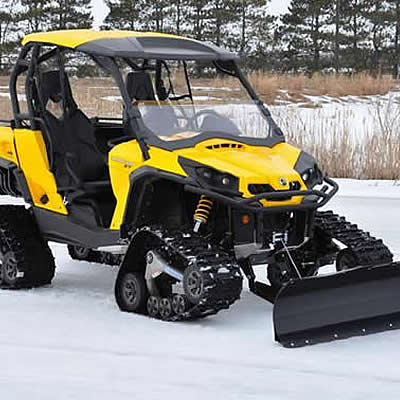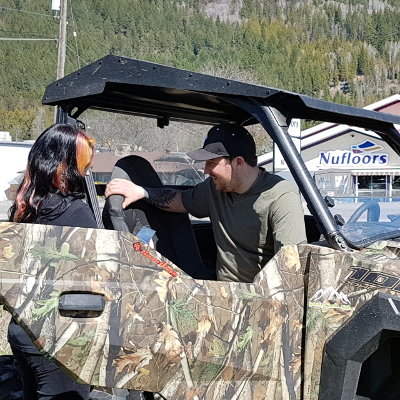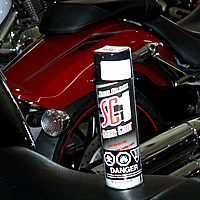There are so many variables that factor into making the right purchase of a bike that will be strong and reliable. Quite often we hear horror stories of the “great deal” gone wrong. If it’s too good to be true, chances are it is.
Cleanliness is key
Upon first inspection of your prospect, make sure it is clean. A clean bike is a sign that it has been well cared for and properly maintained. Cracked plastics and dirt may only be cosmetic but can be a red light indicator that this owner simply did not care. A bike with dirt caked on the motor indicates a possible oil leak. This could be a serious problem. If the bike has lights, do they work? That is a minor issue, but if the sale price of the unit reflects value of the dual sportiness of the bike, they’d better be working. Some surface scuffing is pretty normal—it is a dirt bike. But when we get into dents in the exhaust, it may be a more serious matter. Big dents in a two-stroke’s exhaust pipe can affect performance of the bike and be a weak spot—which affects the integrity of the unit. A dented radiator is a very, very bad sign. While not adding direct dollar value to the unit, rad guards, skid plates and brush guards are definite pluses. They not only protect the integrity of the bike but also give insight into the care the owner had for this specific bike.
The air filter is another must-inspect component. What does the air filter look like? A bit of oil and fuel is normal, but you do not want excessive dirt in this air filter. When you remove the filter, inspect the air-intake track. You want there to be absolutely no evidence of dirt and water—both of which can blow up your bike
Check the fluids
Next, we’ll move on to the fluids. If the current owner of the bike will not let you check the radiator, engine oil and brake fluid, then run—and run very fast. The engine oil should be clean. Grey engine oil can indicate a bad clutch, while black oil can mean the unit is burning oil. If the engine oil is milky, this usually means that the radiator fluid is leaking into the engine oil. The radiator fluid should be full.
Some bikes tend to overheat—which is normal for some brands—and some coolants will address this issue. If the brake fluid is low, this once again takes us to the owner who may not have properly maintained their bike. Brake fluid should be full; if it isn’t, it could tell us that the brake pads are worn out, which leads us back to the proper maintenance of the bike.
Get into the saddle
Sit on the bike and jump up and down. You want to feel a fluid continual motion—any sort of abruptness can mean a seized bearing. When you lift the back of the bike, if there is a clunky feeling, then you should question the integrity of the rear linkage and wheel bearings. When you twist the wheels back and forth, you want there to be no side movement at all. If there is, it may indicate a faulty seal and bearing.
Test out the function of the levers. When you apply the brakes, do they work? Is there any stiffness to the clutch or brake cables? When you apply the throttle, does it snap back? If it has a hot start decompression lever, does it work easily? These aren’t huge deal breakers, but they are bargaining chips in your potential deal. Rusty chain and worn sprockets are, again, not a huge deal, but make note and use them to your advantage. The average chain and sprocket combo for most bikes is around $200, and clutch and brake cables are between $20 and $60. When checking out the tires, keep in mind that they’ll cost between $100 and $150 per tire. All of these issues are minor but food for thought when settling on a price.
Seek a professional opinion
Before you test-ride your potential purchase—which you need to do—ride a bike that you know is strong. It will give you a strong frame of reference when scrutinizing the function of your potential purchase. Excessive noise is a very bad sign.
Even though it may cost you between $85 and $175, a professional shop inspection is a great idea. They can do compression tests and may even know of your potential purchase. Those two factors alone make it worth your while. If you buy a pre-owned bike from a dealership, many shops have a 30-day, 50/50 per cent warranty. You pay for parts and they put in the shop time. It can bring peace of mind knowing your bike has been professionally inspected before your big purchase.
Avoid the “backyard mechanic.” If you have an untrained person doing major mods such as engine modifications, this may not be the bike for you. Service records are like gold—not only do you know what work has been done to the bike but you know it was done right. Cover your bases, and if you have any concerns or questions, contact your local shop—they just may be your best friend. The more you appreciate your parts and service technicians, the more they will help you out.








Comments